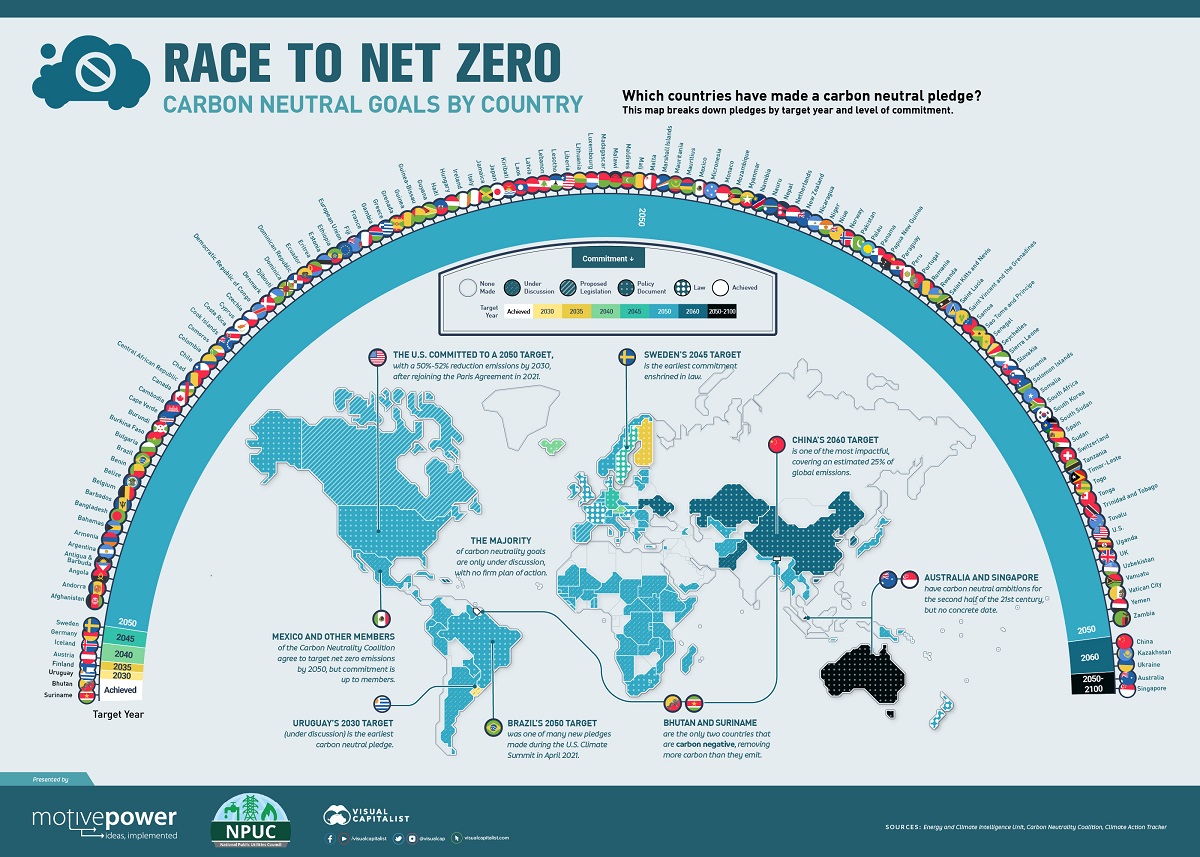
This article was published as a part of the Data Science Blogathon.
Introduction
AI and machine learning are two of our time’s buzz-worthy business terms. As a result, businesses across all industries are looking to implement these technologies to improve and automate their core processes. And the energy industry is no exception.
Renewable energy companies or clean energy corporations (comprising solar, wind, hydro, battery, and nuclear) have harvested the power of machine learning over the years. It has been possible for them to reduce their costs, improve their predictions, and increase the rate of return on their portfolio. The trend is likely to continue at an even more significant speed.
If your company is involved in the energy industry – or consumes a large amount of electricity – there are chances that machine learning and artificial intelligence can boost its performance. But how exactly? Let’s take a closer look.
How has Machine Learning Overhauled the Energy Sector?
There are so many ways in which machine learning/AI can be utilized to transform the energy sector positively. Listed below are a few of the most popular applications currently in development.
A. Grid Management System
In the energy field, grid management is one of the most exciting applications of artificial intelligence. Electricity is generated & delivered to customers through a set of a complex networks (also referred to as the power grid). One of the challenges with the power grid is that power generation and demand must always match. Otherwise, blackouts and failures can occur.
Although there are many means of storing energy, the most common method is pumped hydroelectric storage, which involves pumping water to a specific elevation and then harnessing it again by allowing it to fall onto turbines.
It is difficult to predict how much electricity the grid will produce using renewable energy. After all, it is contingent upon several factors, such as sunlight and wind.
B. Demand Forecast
Large swings in demand can make it very expensive for countries that produce most of their energy using renewable energy sources. With most countries shifting towards green energy, it is becoming increasingly difficult to react effectively to swings in demand. For example, Germany plans to use renewable energy to cover 80% of its electricity consumption by 2050.
In countries such as Germany, there are two significant challenges to overcome. The first is swings in demand. It is not uncommon for electricity demand to skyrocket on a specific day or period of the year (for example, on Christmas). The second is whether volatility. In either case, supplemental stations or fossil fuel-powered facilities may be required to satisfy the excess demand if the wind does not blow or the sky is cloudy.
C. Predictive Maintenance (Fault Detection)
Apart from matching energy production with energy consumption, artificial intelligence is also a significant factor in ensuring power grid reliability and robustness.
In 2003, there was an event when a massive blackout in Ohio was triggered by a low-hanging high voltage power line brushed against an overgrown tree. There was no indication the incident had occurred, as the power system alarm failed. The electric company discovered the issue after three more power lines fell for similar reasons. Ultimately, this oversight failed the entire grid.
In addition, the blackout lasted for two days and affected 50 million people, 11 people died, and about $6 billion was lost.
D. Demand Side Response Interruptions
Many countries partner with companies to analyze and predict weather data and electricity. To forecast the amount of wind and solar energy to be generated at any given time, Germany initiated a project with EWeLiNE. As a result, the country can cover excess electricity demand by using non-renewable energy whenever required.
They incorporate enormous historical data sets to train their machine learning algorithms to effectively predict weather and power changes. As well as data collected from wind turbines or solar panels, they also utilize historical data sets to train their machine learning algorithms.
E. Trade & Schedule Automation
Critical applications are sourced using AI and machine learning to ascertain the best way to use your energy flexibility on your site and within the energy market in real-time. These include:
- Price Optimization
- Balancing Services & Demand Side Response
- Energy Market Trading
Some common dataset used for forecasts and automating energy controls based on several sources includes:
- Aggregated site data
- Individual site data
- Grid frequency data
- Historical grid data
- Pricing in traded energy markets
- Weather forecasts
- Historical weather data
Evolution of the Internet of Things (IoT)
Using machine learning techniques, predictive maintenance can be implemented. Sensors collect operation time-series data from Power lines, machinery, and stations (data with a timestamp).
Machine learning algorithms can detect whether a component is about to fail in X amount of time (or n-steps). Furthermore, they can also expect the remaining useful life of machinery or when the subsequent failure will occur. In addition to predicting machine failure efficiently and preventing outs and downtimes, these algorithms optimize maintenance activities and periodicity, thus reducing maintenance costs.
For example, the United Kingdom started installing phasor measurement units to prevent power line failures. They can measure:
- A voltage meter and a current meter
- GPS (global positioning system)
- Timing (in microseconds)
- Device Identification
As a result, events such as the London blackout can now be prevented entirely. Ultimately, AI and machine learning can help energy companies shift from reactive to predictive maintenance.
Identify New Resources
In addition to weather forecasting and renewable energy source optimization, artificial intelligence is used to explore and drill for fossil fuel energy sources.
The robotic device will be used to explore, gather data above the floor, and conduct an analysis based on the information to identify new locations for drilling oil and natural gas.
Smart Energy Consumption
A switch to renewable energy sources is not just a matter for governments and electric companies. Companies like Google and Microsoft are reducing their energy consumption to impact the environment and their bottom lines positively.
Google is known for its intelligent data centers established all over the world. These data centers generate an enormous amount of heat, which needs a great deal of electricity to cool.
DeepMind AI implemented state-of-art machine learning models to churn down on energy cooling on its Google data centers by 40%; this reduced their utility costs and helped reduce overall emissions, reducing their carbon tax obligations.
Upcoming Trends

Courtesy: Image via Visual Capitalist
With developed countries striving for a completely green economy, maintaining a secure, balanced, and reliable power grid is a priority. Machine learning and artificial intelligence certainly have a long way to go in the energy sector.
That is implementing 100% renewable energy sources, AI-controlled power distribution, and grid smart management to create a digital power grid that enables two-way communication between utility companies and consumers.
It is the goal of smart grids to provide consumers with continuous data collection and display so they can further improve their energy consumption behaviors through smart meters, sensors, and alerting devices. As well as predicting demand, improving performance, reducing costs, and preventing system failures, it can also be fed into machine learning algorithms.
While smart grids are being implemented in several developed countries, there is still a long way to go before implementing 100% renewable energy sources, AI-controlled power distribution, and grid management.
Frequently Asked Questions
A. Energy analytics refers to the process of collecting, analyzing, and interpreting data related to energy consumption, production, and efficiency. It involves using advanced technologies and techniques to extract insights and optimize energy usage, identify patterns, and make informed decisions for improving energy performance, reducing costs, and minimizing environmental impact.
A. The scope of an energy analyst involves analyzing energy usage, identifying inefficiencies, and proposing strategies for optimizing energy consumption. They assess energy data, conduct energy audits, evaluate energy-saving technologies, and provide recommendations for reducing costs and environmental impact. Energy analysts may work in various sectors, including buildings, manufacturing, transportation, and utilities, aiming to enhance energy efficiency, sustainability, and overall energy performance.
Conclusion
In energy, machine learning is booming, with new applications emerging every year. Everything except the energy generation is set to be improved by data and technology.
The key is balance. AI can be good in theory, but it cannot be at the expense of the continued emission of greenhouse gases. E.g., computer vision and geospatial analysis are still being used to identify natural gas reserves, pushing us away from our commitment to net-zero and fueling our continued reliance on fossil fuel.
AI is undoubtedly the future of the clean/green energy revolution. It is optimistic about its implementation in applications such as green residential and commercial construction development, grid management, and predicting the uncertainty in non-synchronous fuel. Well, that’s exciting!!
The media shown in this article is not owned by Analytics Vidhya and is used at the Author’s discretion.






Wanted to know if you have a course in Energy Analytics